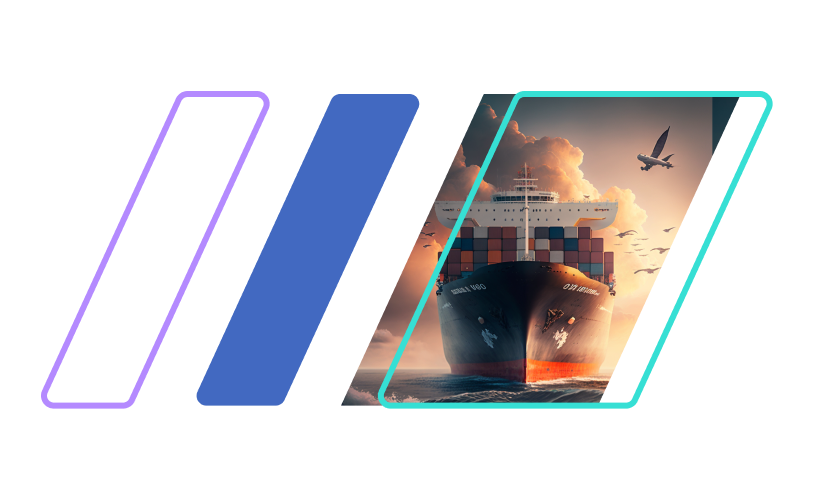Some airlines still fly planes built in the 1970s.
Even back then, planes were built to last. What is alarming, though, they still use pre-Walkman era 1970s technology to connect with customers. And that explains why a recent air and ocean carrier digitalization benchmarking study found most airlines ranked behind ocean carriers in customer connectivity, structural transformation and online experience.
Why the lag? We spoke to two experts – digitalization managers at two pioneering airlines, who shed light on the lag and what’s changing going forward.
How The Airlines Lag
It’s hardly news that cargo airline digitalization lags. Where is it most clear?
The gap between modes was wide – the average ocean carrier benchmark score was almost double the airline average.
Only three top airlines have real-time (API) pricing and booking connectivity for customers.
Where airlines lagged ocean carriers most was structural transformation – investing in new technologies and focussing top-down on changing systems, processes and culture. In effect, most weren’t even trying.
Blame The People In First (And Economy) Class
One explanation for the lag is the relative influence of cargo businesses to the airline’s passenger business. Since the cargo division typically makes up just 9% of airline revenues, they are often overlooked for much-needed capital investment.
But Chris Bohn, Product Owner Quote & Book at Air France KLM Martinair Cargo, sees a change.
“The big players now realize there is much to gain from having a modern, lean and efficient cargo unit. They understood that flight profitability means focussing on both the passenger and cargo business.”
Fragmented Industries Lack Giants
Industry fragmentation is another explanation. The top ten ocean carriers command an 83% market share, with the largest carriers driving change. Maersk, for instance, has a focused digital innovation program and sponsors three separate incubator/accelerator programs. It can afford to, with 18% of the market, while the air cargo industry doesn’t have such giants to lead them.
Jochen Goettelmann, CIO at Lufthansa Cargo, sees fragmentation at both airlines and forwarders as a cause for lagging digitization.
“Because the market is so fragmented, airlines look to keep within the pack. They play safe, invest in what is completely under their control and will give quick and substantive returns. Like enhancing their TMS, for instance. That’s why 80% of the top air carriers have state of the art TMSs. Very few are interested in taking a lead, like investing in APIs. Getting ahead of the pack is a longer-term play that doesn’t bring immediate returns on investment. And I wouldn’t even say their customers are driving this type of change. In my experience, there hasn’t been a broad push from forwarders or shipperss for APIs. The freight forwarder market is even more fragmented than ours and has a similar pack mentality.”
Somewhere For The Buck To Stop
Half of the top ocean carriers, but only one of the top 20 air carriers had an executive-level transformation head. Were airlines lagging because they didn’t have an executive charged with change?
Both Chris and Jochen stress the importance of having a transformation head. But, while it’s preferable within the cargo business, Chris admits the role can also work from the corporate level. Either way, the important factor is that the transformation lead is unrestrained in their focus on transforming, and they must also have the right personal characteristics to succeed.
Jochen agrees that focus is key. Unlike a CIO or CTO, a transformation head does not have to concern themselves with legacy technology. He referenced several global forwarders who have clearly benefited from having an unencumbered, standalone transformation head.
The Dynamics Of Change
Jochen sees air carrier digitalization one or two decades behind many other industries. Neither customers nor pack mentality are particularly conducive for driving change.
But revenue is.
Increasing revenue and optimizes yield is critical…and also one of the most impressive shifts in air cargo today. That’s exactly what Chris’s Air France KLM Martinair Cargo and Jochen’s Lufthansa Cargo have achieved with dynamic pricing. This pricing strategy converts more empty space into revenue, which is mission-critical in an era of sub-50% capacity utilization.
Air cargo carriers need look no further than their company’s passenger business to see it’s effectiveness. When American Airlines developed dynamic pricing in the early 1980s, competitors, and eventually all airlines, soon followed suit.
But it can’t happen in isolation. First, airlines must prepare APIs to connect information from their TMS, RMS and CRM systems in real-time.
When it comes to customer-facing digital transformation, most air cargo carriers are flying behind the times. But increasing revenue and optimizing yield through dynamic pricing is the game changer airlines needed.
Chris and Jochen’s airlines both developed dynamic pricing in-house. But now airlines who don’t have the capacity but want to get ahead, have another option. Freightos WebCargo can connect the Horizon portal to their systems to supply dynamic pricing to both internal sales teams and their online sales channel as well as third-party sales platforms.



